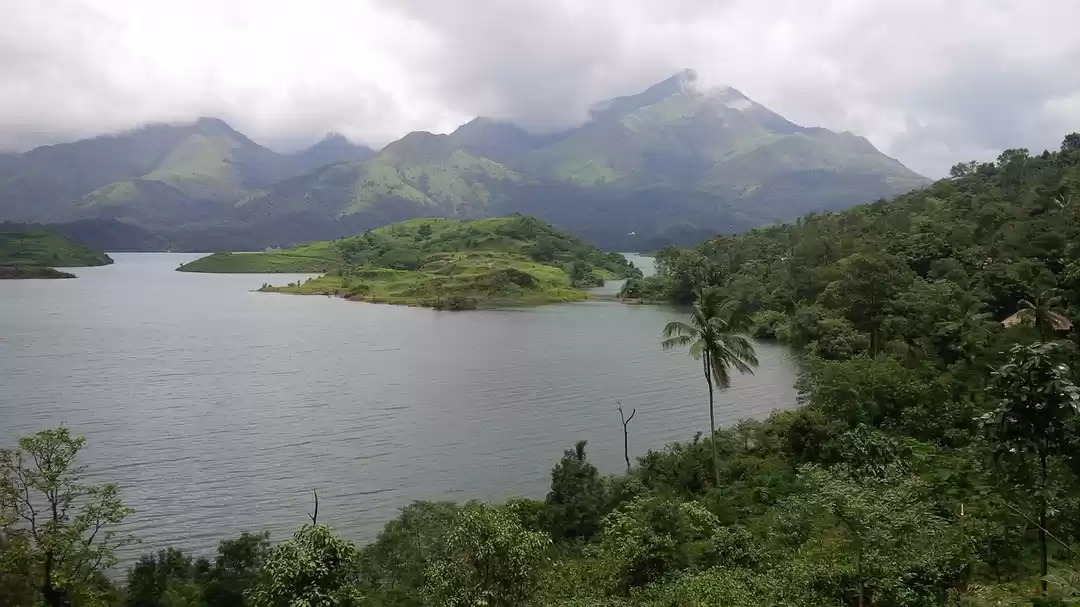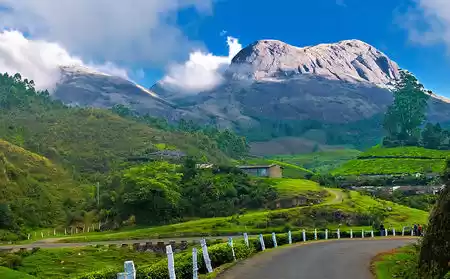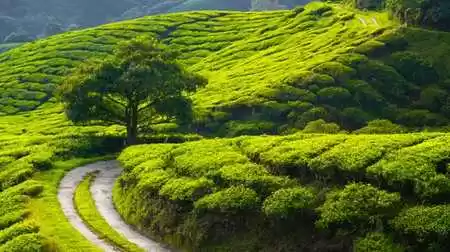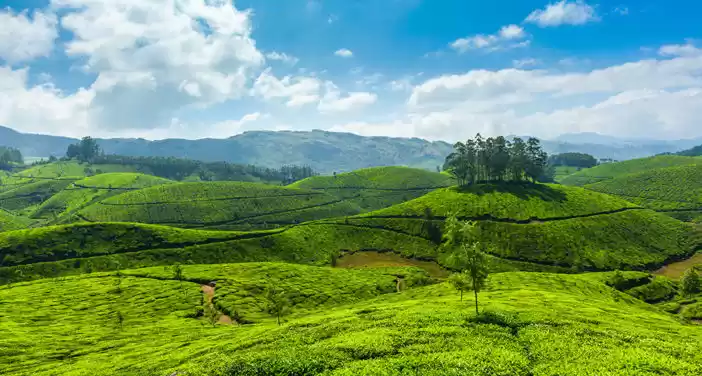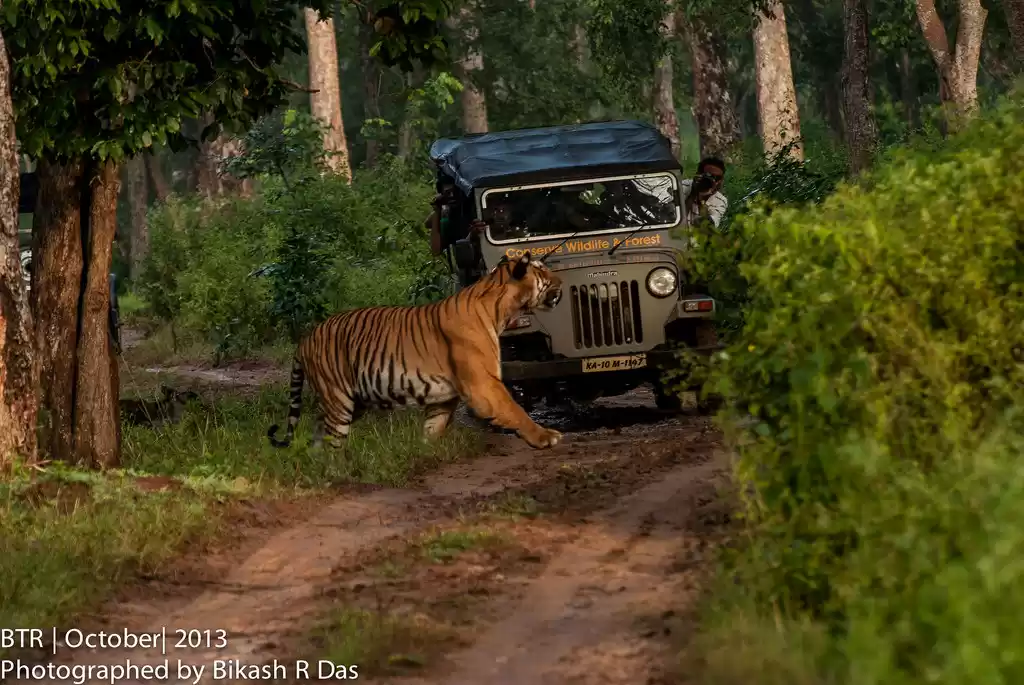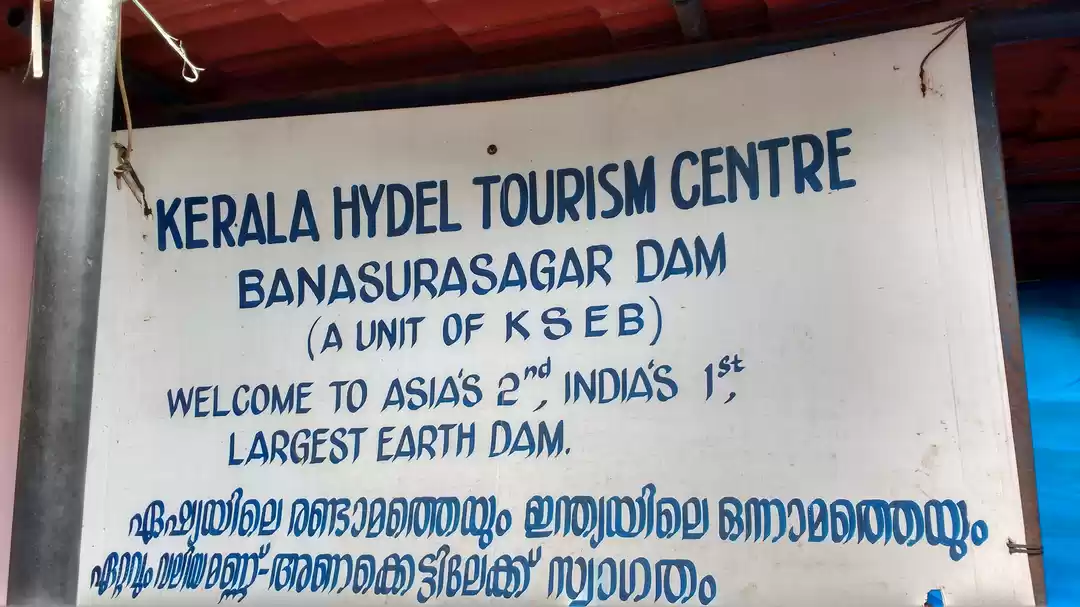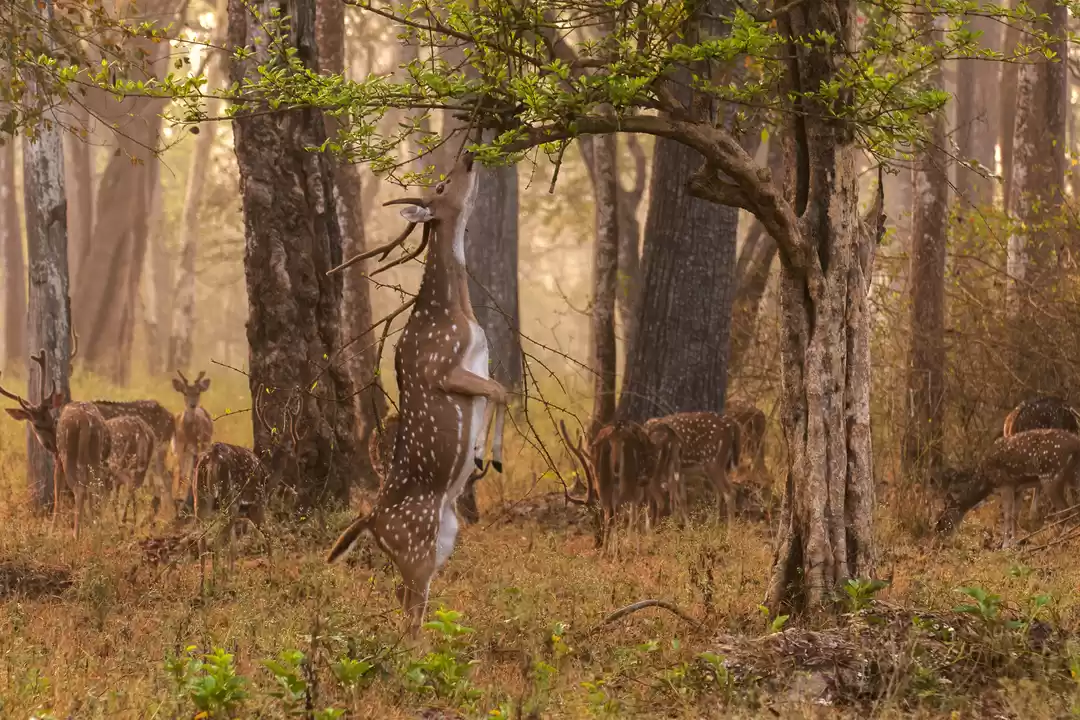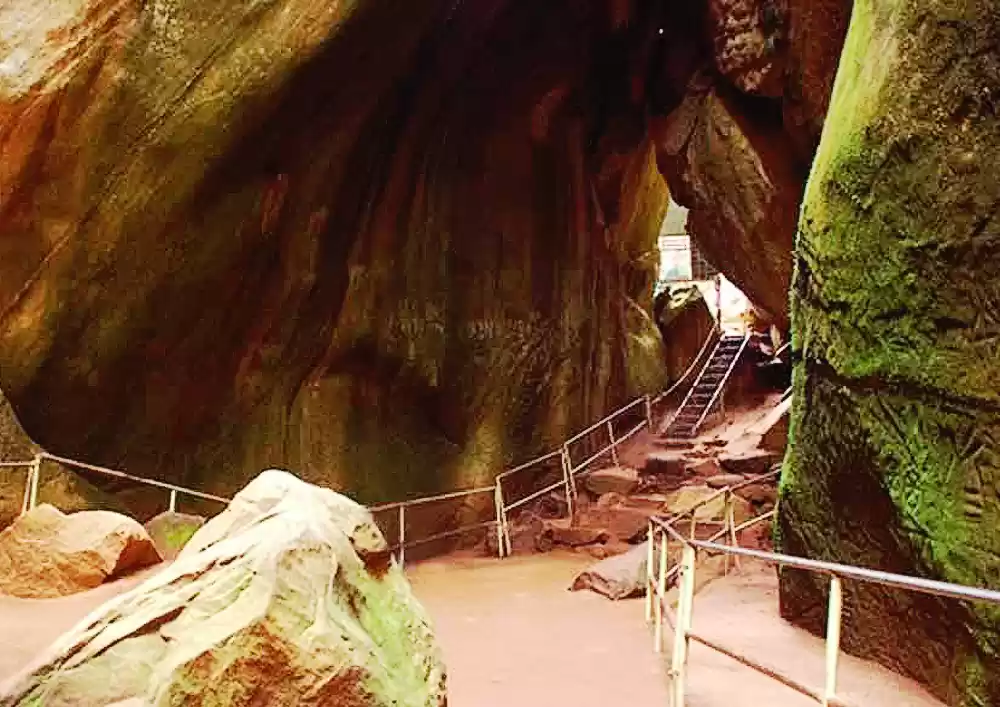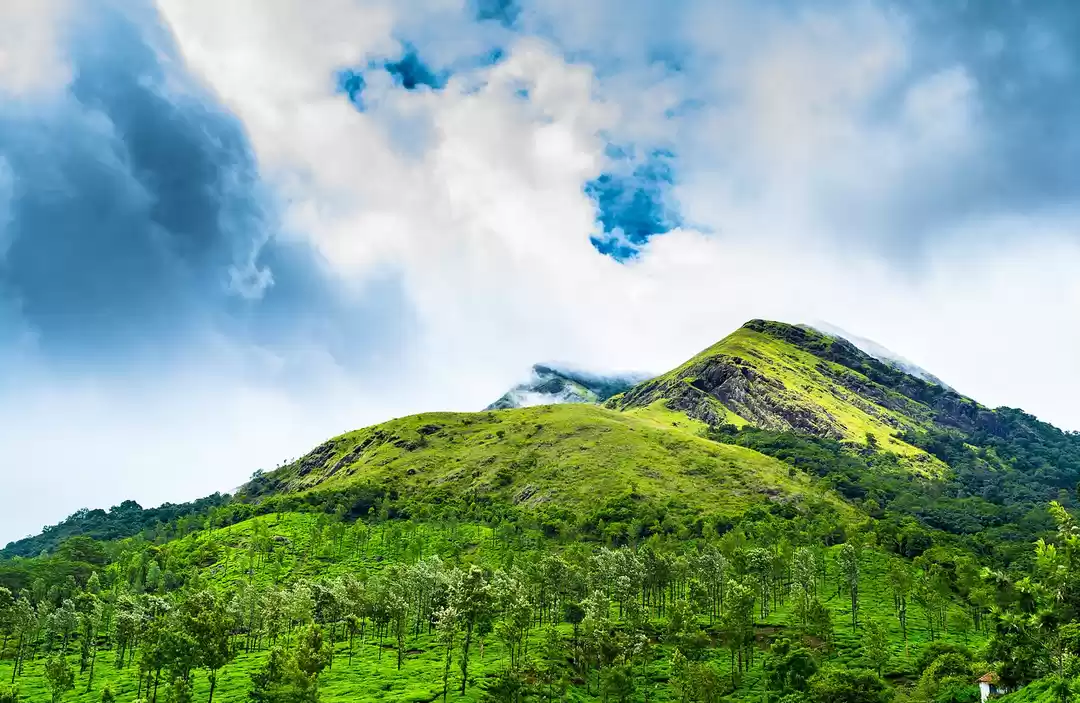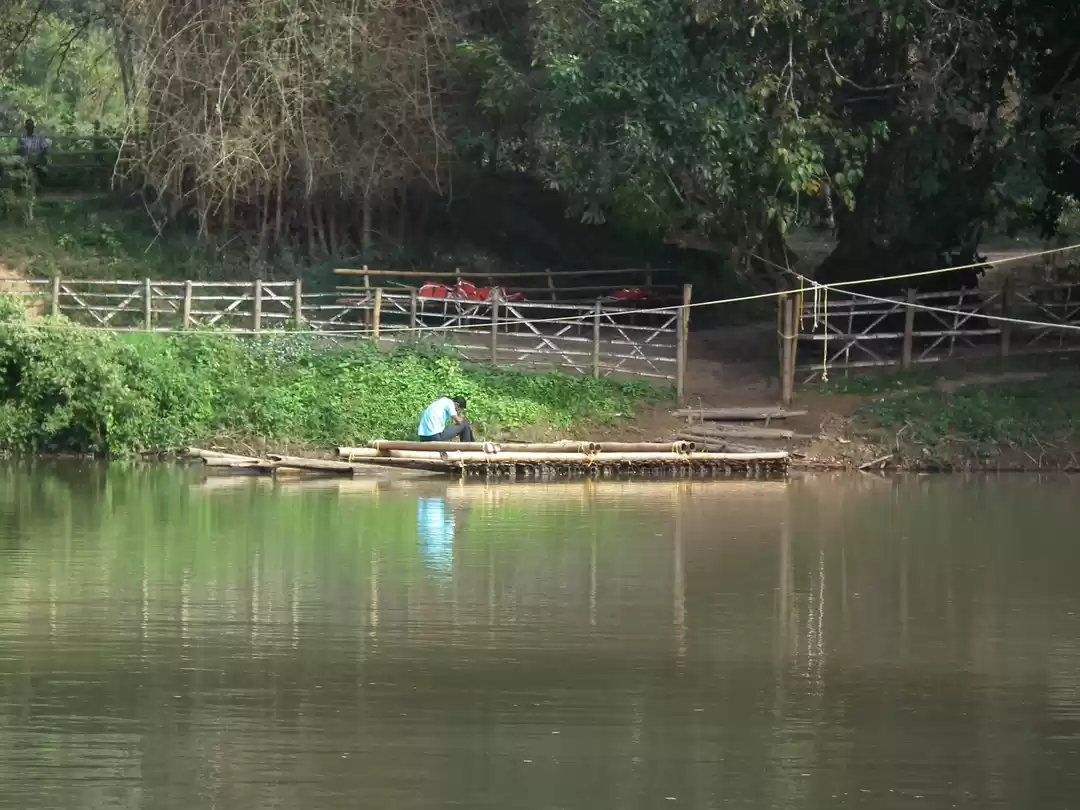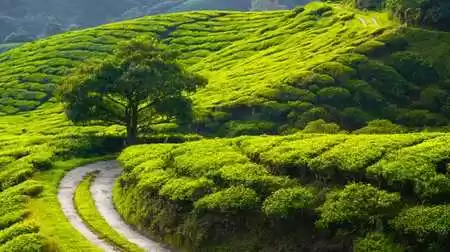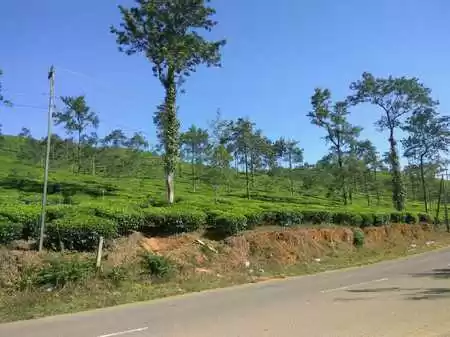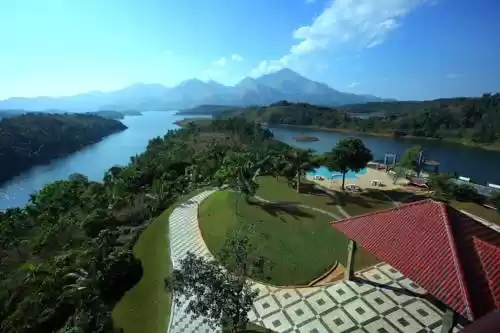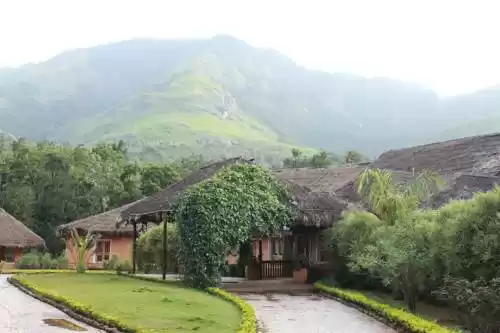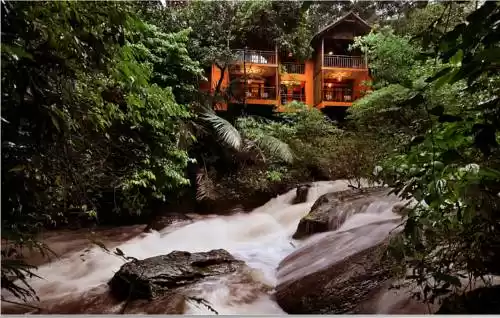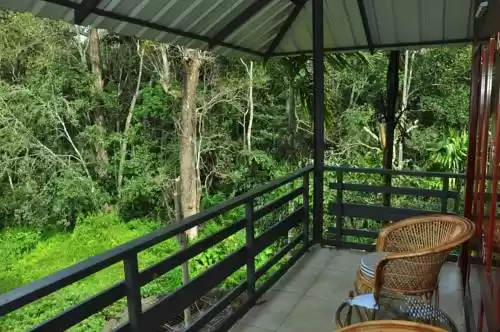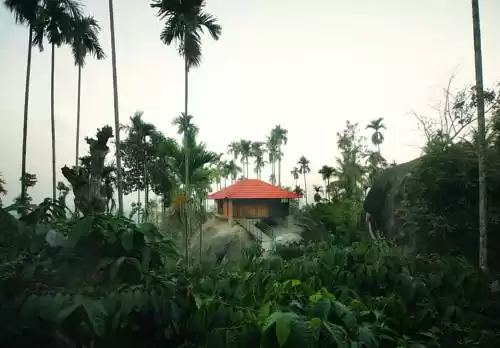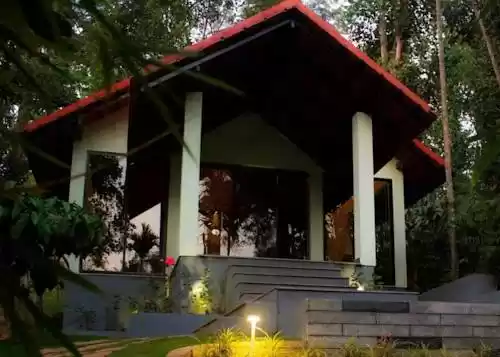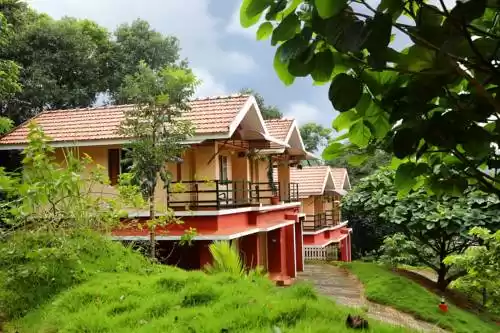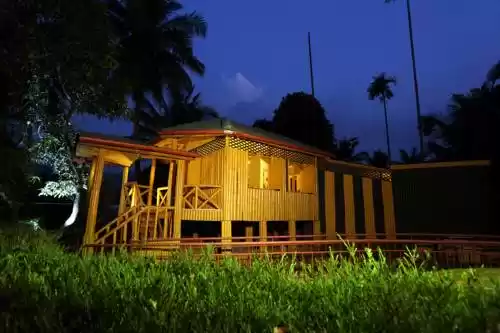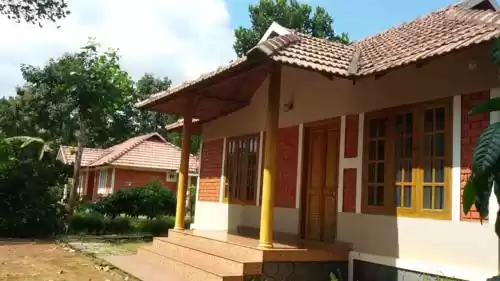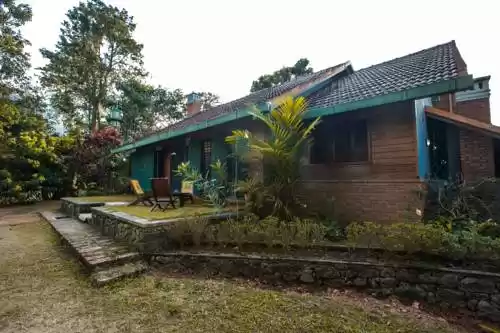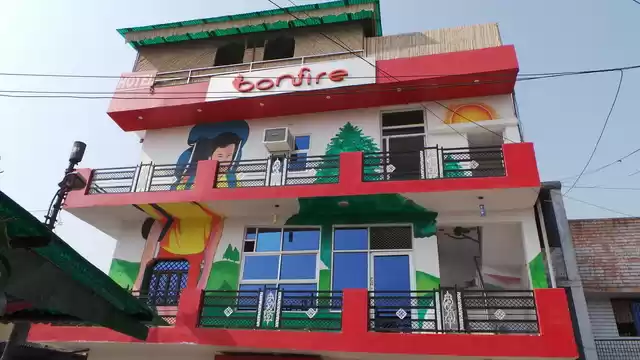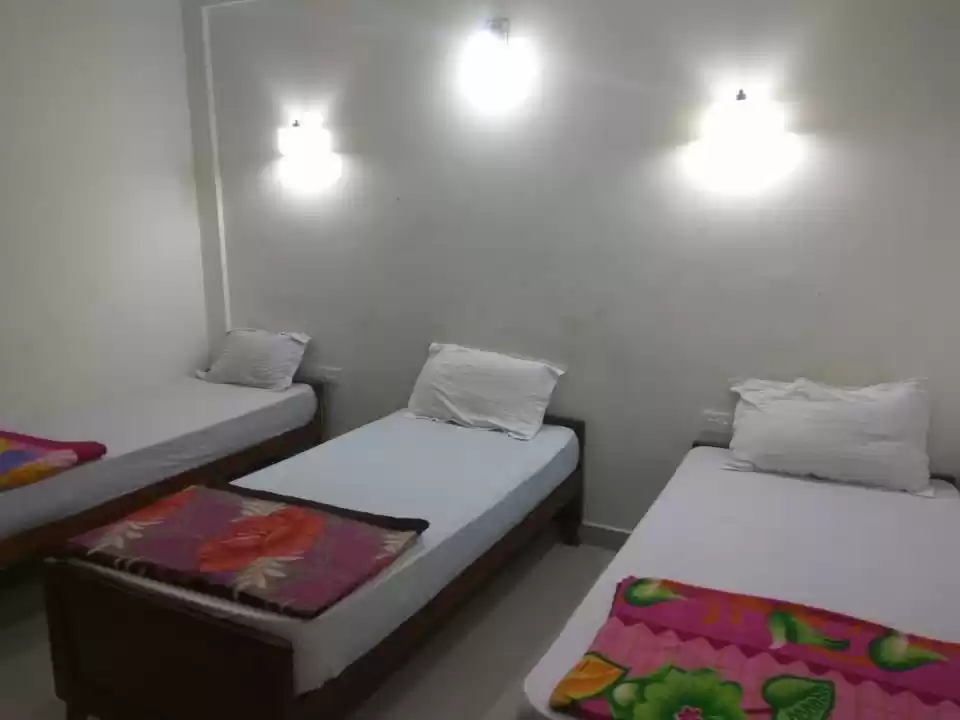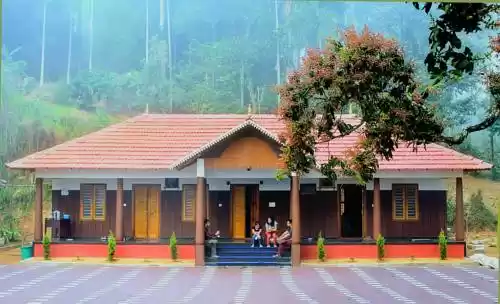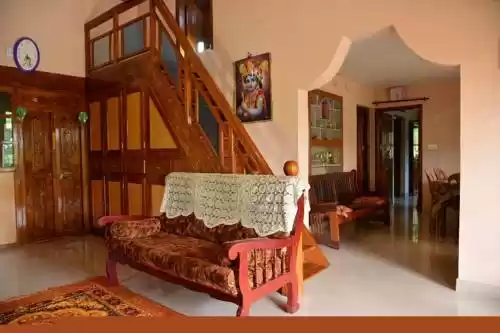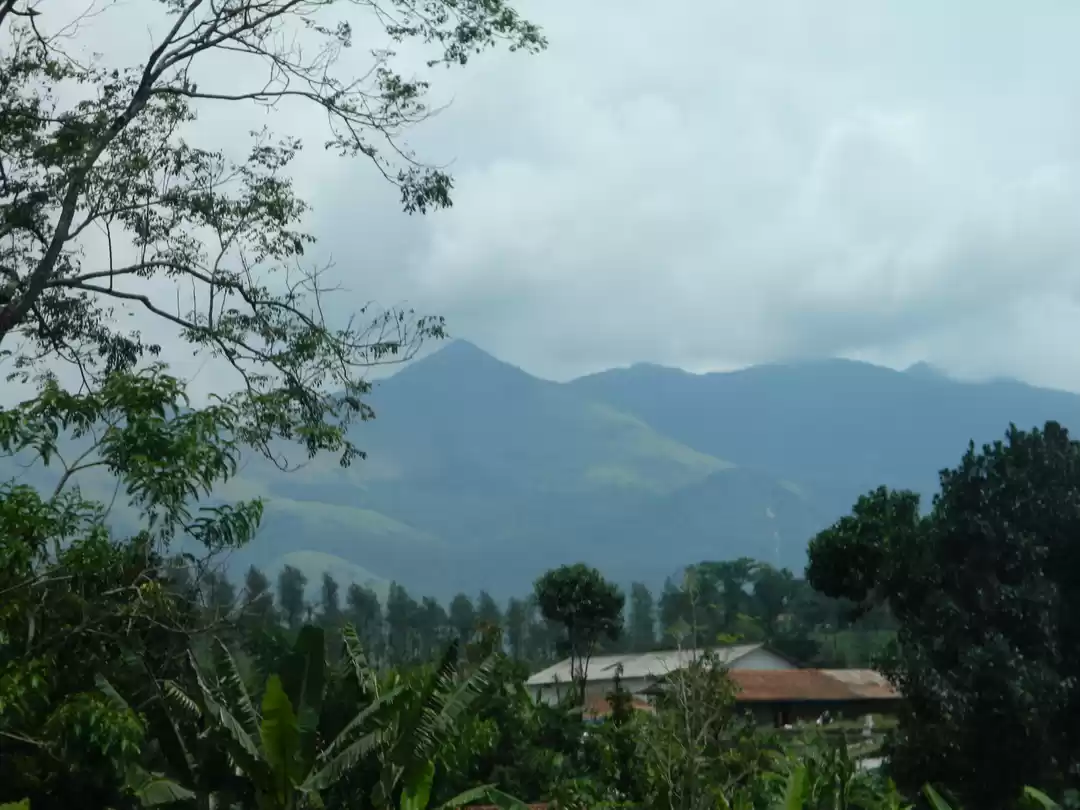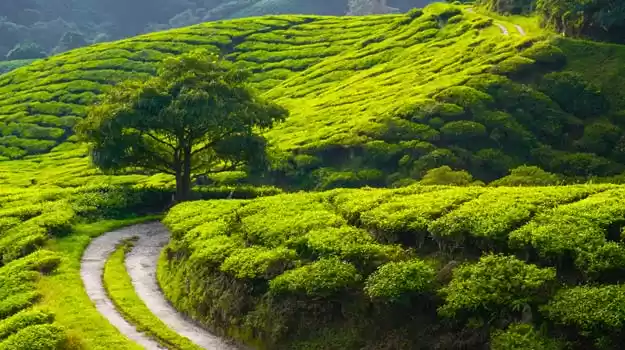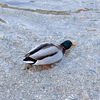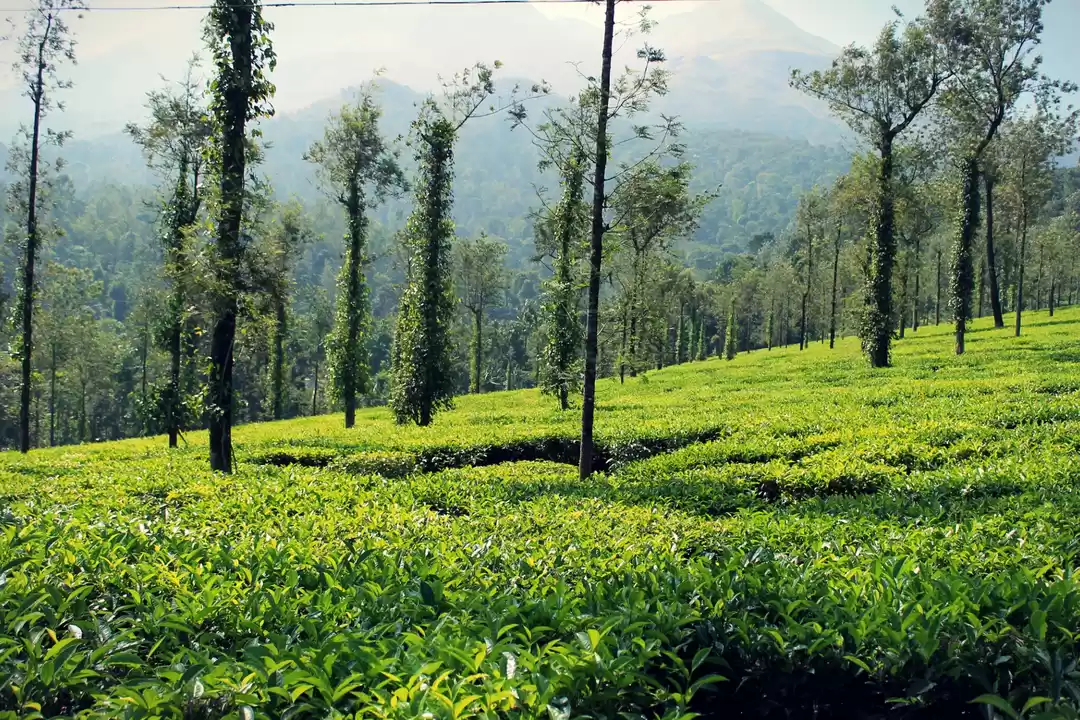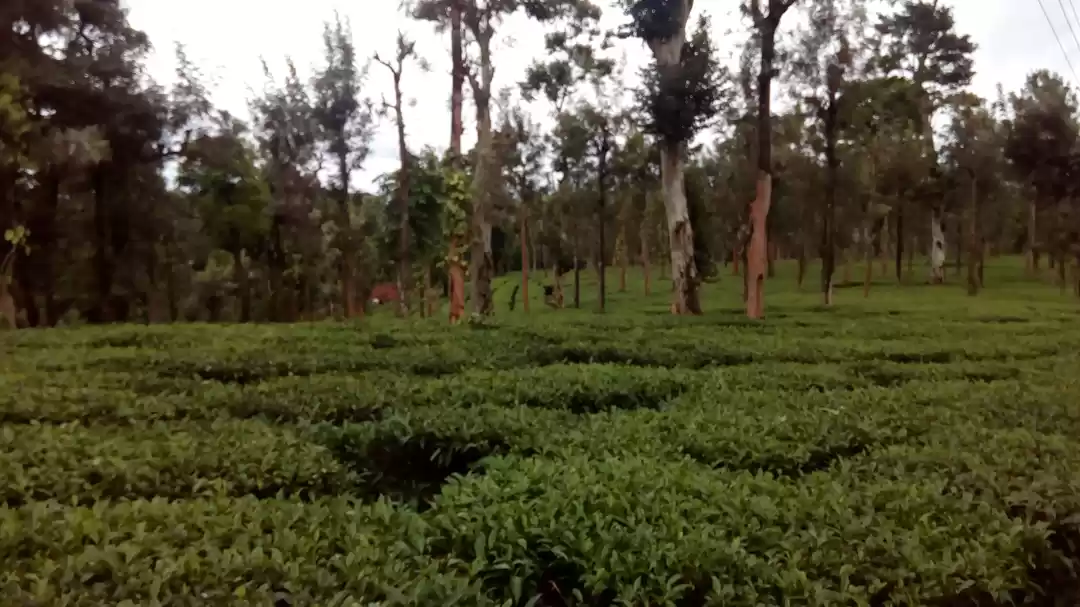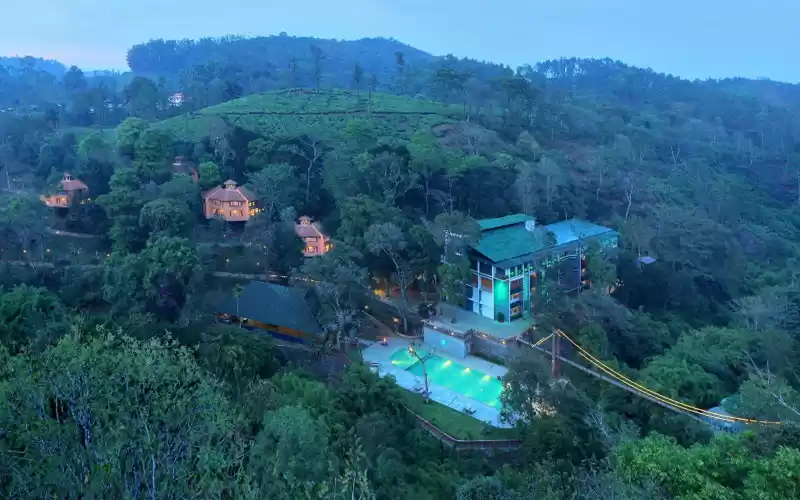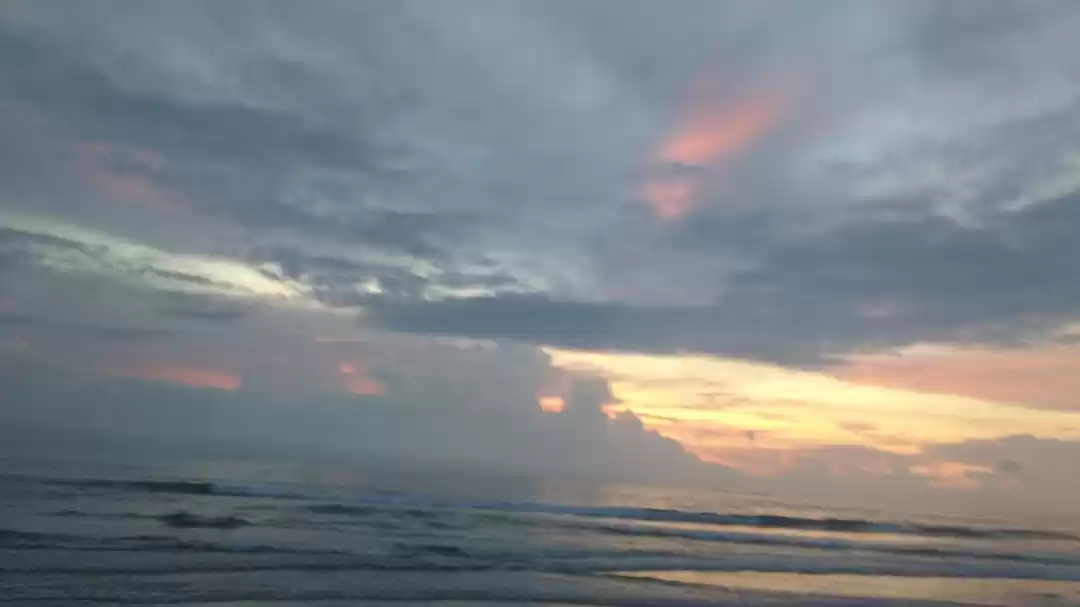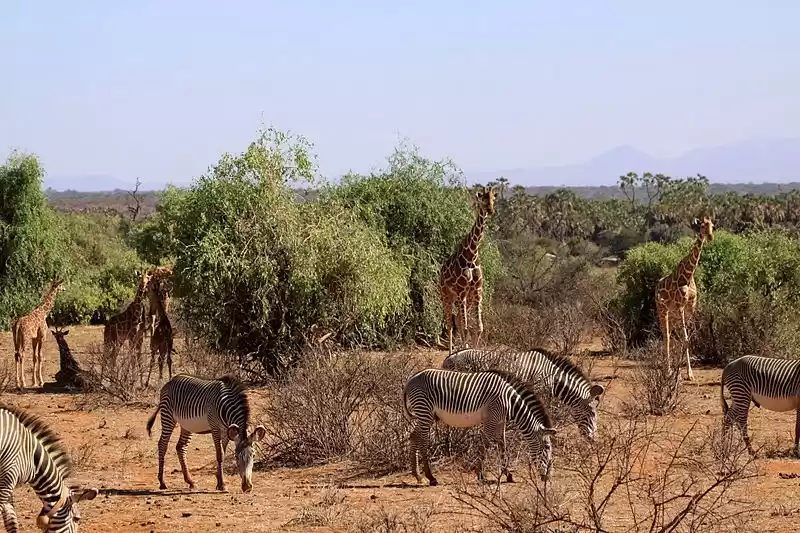Wayanad Tourism and Travel Guide
Tripoto Recommends
Best Places To Visit In Wayanad
Itineraries For Wayanad
Best Luxury Hotels In Wayanad
Best Mid-Range Hotels In Wayanad
Best Budget Hotels In Wayanad
Best Hostels And Homestays In Wayanad
Travel Articles And Blogs For Wayanad
Best Time To Visit Wayanad
The district enjoys a pleasant climate all through the year which might be responsible for its flourishing Wayanad tourism. The year is categorised into four seasons here – chilly climes during December-February, summer during the months of March-May, the south-west monsoon which is characterised by copious rainfall and windy days during June-September and the north-east monsoon during October-November.
If your idea of the perfect vacation is being surrounded by tangles of vivid greenery and heavy rains that bring with it the scent of the earth, then it is recommended you visit between May and October. However, for those who’d like to enjoy the best of Wayanad tourism without getting drenched, the best time to visit is anytime between October and May.
Top Attractions In Wayanad
Wayanad is replete with forests that shelter an amazing variety of wildlife, prehistoric caves that hold stories in their confines, peaks to trek up to, sparkling water bodies for a delicious swim and solemn and beautiful temples, all of which contribute to Wayanad tourism. Just pick up this Wayanad travel guide for a comprehensive bout of Wayanad sightseeing!
Wayanad Wildlife Sanctuary
One of the major highlights of Wayanad tourism is its wildlife, and you’ll find plenty of it in the Wayanad Wildlife Sanctuary. It was started in 1973 and became a key part of the Nilgiri Biosphere Reserve, the first biosphere out of 14 biospheres in India. Comprising two major sections named Muthanga and Tholpetty, the sanctuary shares borders with other regions famous for their biodiversity.
Both Muthanga and Tholpetty are closed from mid-March to mid-April but are open during Wayanad’s soaking monsoons. The drive towards Muthanga and Tholpetty is beautiful with a wall of green on both sides. Paddy fields, plantations and thickets of bamboo trees and ginger bushes keep pace with you.
Wayanad tourism offers a two-hour jeep safari to get your fill of the awe-striking flora and fauna here. Ride under the dappled sunshine of the deciduous forest with patches of evergreen forests alive with the calls of around 216 bird species including peacocks, babblers, owls, cuckoos and black woodpeckers to mention a few. You’ll spot bamboo groves and trees like teak, rosewood, eucalyptus and silver oak plantations.
Book a safari at one of the two entrances to gape at langurs, bison, bonnet macaques, sambar, wild boars and herds of majestic elephants in their habitat. If luck favours you then you might be able to spot a fiery-eyed tiger or a graceful leopard in the forest. Snakes and monitor lizards slither in the undergrowth and crocodiles and termite hill geckos lurk in the shadows.
Cost of two-hour jeep safari: Rs 650
Banasura Dam
The largest earthen dam in India and the second-largest in Asia, the Banasura Dam features prominently in the list of Wayanad tourist spots.
It is made of massive stones and boulders and is built along the Karamanathody river. This quaint dam has occupied pride of place in Wayanad tourism. The dam helps provide for irrigation, drinking water and electricity to the surrounding areas. The climb is well worth the effort when you arrive at the top of the dam to look down at the gleaming expanse of the reservoir below.
The water is dotted with small, verdant islands which are home to elephants. The monsoon lends the view an ethereal touch. You can hike up to the Banasura Peak to cross tinkling streams, waterfalls and lush greenery. Look down upon the Banasura lake framed by the Banasura hills which owe their name to the son of a famous ruler, King Mahabali.
Wayanad tourism has built a children’s park with tree swings to keep them busy. There are also some food stalls you can browse through to load up on snacks to go with the sensational view. Go speed boating on the lake to feel the wind in your hair and your adrenaline coursing or take a pedal boat to relax and enjoy the sight around you.
Entry fee: Rs 10
Speed Boating: Rs 450 for five people
Photography: Rs 20
Kuruva Dweep
This river delta is a hidden gem of Wayanad tourism and comprises a cluster of islands all carpeted with greenery and spread over 950 acres. The island is inhabited with exotic species of birds and plants such as rarely found orchids and herbs. Surrounded by streams, Wayanad tourism has come up with bamboo rafts and fibreglass boats that glide across the water for ten minutes until you reach the thickly forested islands. Take the rafts around to explore all the islands, each more charming than the last. Delve deeper inside the island to come upon bridges made of bamboo and towering trees which are rare and wizened with age. Stroll through the pristine island to soak in its beauty or trek around to cover more ground. This ecologically delicate island is well protected by Wayanad tourism and hence no parties or picnics are allowed here.
You must get passes from the Forest Department to visit the island which are readily available at the counter. Visits to the cluster of islands are restricted during the monsoon. They remain open during October to May and you can feast your eyes on this beauty at a nominal fee. Just make sure you get here between 9.00 am to 5.00 pm.
Thirunelli temple
This attraction has to have a spot in your Wayanad tourist places list. The Thirunelli temple with ancient temple architecture stands pretty beside the forest-covered Brahmagiri hills in Wayanad and paints a pretty picture, making it one of the gems in the crown of Wayanad tourism.
Known as Wayanad tourism’s ‘Kashi of the south’, the temple was built around an interesting legend. The story goes that while going around the world, Lord Brahma came upon the Brahmagiri hills which left him smitten with their beauty. He descended to explore the place and had a vision of Lord Vishnu under an amla tree. According to Wayanad tourism, Lord Vishnu’s three incarnations namely Parasuram, Ram and Krishna have visited the temple on separate occasions during different ages. Lord Vishnu, in turn, promised that the water around the temple could wash away all earthly sins and gave birth to the stream of Papanashini (destroyer of sins).
The temple is imbued with an air of devotion and soul-soothing serenity, surrounded as it is with lush forests. All rituals of the temple are performed on the banks of the Papanashini stream which is believed to have medicinal properties. A sacred pond lies next to the stream where earlier five streams would pour in. Fringed by dense bushes, the pond holds in the middle a stone slab with the foot imprint of Lord Vishnu. These religious elements make the temple a hotspot for Hindu pilgrims in Wayanad tourism.
There is a holy rock in the temple where people pray for peace for their ancestors. On the western side of the temple lies the cave temple Gunnika which is dedicated to Lord Shiva.
Sit down by the temple to stare at the grand pillars and stone carvings against the mesmerising backdrop of mist-covered peaks to sense the tranquillity seeping through your being.
Opening hours: 5.30 am to 12.00 pm, 5.30 pm to 8.00 pm
Activities and Things To Do In Wayanad
Wayanad tourism pairs numerous activities with the beauty of its misty hills and sprawling overgrown forests to keep you enthralled. If you’ve been wondering about the kind of activities you can indulge in the peaceful and laidback district, you won’t be disappointed. We’ve got enough activities in this Wayanad travel guide to fill up your days on your Wayanad trip.
Trek to a heart-shaped lake
Lace on your trekking shoes to hike to Wayanad tourism’s highest attraction, the Chembra Peak. The climb is well worth it when you come across a stunning heart-shaped lake called Hridaya Saras set on rolling green meadows. Naturally shaped into a heart, the lake has a glassy surface and is so clear that you can see all the way to the bottom.
The climb itself is a treat. Starting off, you’ll be treated to green plantations and rolling hills which are one of the delights of Wayanad tourism. As the climb steepens and your legs start protesting, you’ll be compensated with valleys opening up before you to give you sweeping views of the panoramic hills and countless treetops. There is a five-kilometre hike to get to the watchtower and a three and a half kilometre trek through dappled forests and grasslands to get to the summit. The trek is spread over five hills; sing a cheery tune along with the birds in the forest to break through the foliage and look at the unique lake.
Wayanad tourism has made permits available for the trek at the VSS office, which is two kilometres away from the town of Meppadi. You’ll need a ticket which is valid for a group of ten people and comes with a guide who will meet you on the observation deck. The only downside is that a single person, without a group, will still have to shell out the same amount regardless of whether he’s travelling with a group or not.
Ticket cost: Rs 750
Pakshipathalam
If you’re a hardcore trekker who’d like something more challenging then head out for this 7 km-trek which has large boulders studded deep in the forest for clambering. The lush forest has deciduous trees through which sunlight streams in shafts. With numerous kinds of birds chittering in the trees, bring your binoculars along for a good session of birdwatching.
Permits are required for this trek which you can get at forest offices in the south or north Wayanad. The DTPC office in Kalpetta, under Wayanad tourism, also organises trekking guides that charge about Rs 600 per day. You can also camp in the forest and spend a night under a starry ceiling for an incredible experience. You can rent camping gear at Rs 250. If you love your own company when it comes to trekking then get your permit and reach the Thirunelli temple bright and early at 8.00 am.
Enjoy amazing waterfalls
While Wayanad tourism boasts of numerous waterfalls sprinkled liberally all over the evergreen landscapes of Wayanad, a particularly striking waterfall is the Soochipara Falls.
Enjoy a scenic drive replete with views of rolling green tea estates as you drive from Meppadi to the Sentinel Rock Waterfalls which Soochipara is also known as. Nestled amid deciduous, evergreen and alpine forests, this three-tiered waterfall cascades with tremendous force. The waterfall is named Soochipara or Needle rock as the water hits sharp spikes of granite at the base.
The 200m high waterfall has a cliff face which adrenaline junkies can climb. The waterfall forms a pool which looks so tempting that you won’t be able to resist diving in for a refreshing dip. If you’d rather stay dry, stand near the falls to feel the cool spray on your face.
You can also trek up to the Sunrise Valley to look down upon the falls.
Timings : 9.00 am - 5.00 pm
Entry Fee: Rs 80
Camera: Rs 50
Marvel at cave drawings
Eddakal cave is one of India’s prominent prehistoric rock shelters and a highlight of Wayanad tourism. Get a workout on the one-kilometre uphill trek through an aromatic coffee estate.
The cool darkness of the caves harbour art from the Neolithic Age in 4000 BC and Megalithic Age. Some caves have 98ft long, 30 ft wide carvings of a chieftain, wild animals and writings in the Brahmi script.
A steep 20-minute walk up the Ambukuthi mountain takes you to a wonderfully lit cave which has a collection of ancient petroglyphs which goes back over 3000 years and offers sweeping views of Wayanad which will make your jaw drop.
If you’d like to stick around longer amidst all the history, then head to Eddakal Hermitage which has cottages around the hill and a cave restaurant where you can dig into delicious food during a candle-lit dinner.
Timings: 9.00 am to 5.00 pm (No entry after 4 pm)
Stare in awe at legendary Chain Tree
The Chain Tree is a lesser-known attraction of Wayanad tourism and is set in the mist-shrouded ghats of Lakkidi. The shackled ficus tree has a legend around it in which a tribal, Karinthandan showed a British engineer a way through the eerie Thamarassery Ghat. The Britisher wanted to grab credit for the route and killed the tribal. Since then, the outraged ghost of the tribal started haunting passerby who pleaded with a priest to rid them of the spirit. The priest exorcised the ghost and tied him to the tree. Incredibly, as the tree grew taller, the shackles draped around the branches grew with it and miraculously didn’t fall short in length.
Visit this temple which was once a storage centre for ammo
Wayanad tourism has some spectacular places on offer and Sultan’s Battery, a quaint peaceful town with plenty of greenery and sparkling streams is one of them. The place has an intriguing story behind it. In the 18th century, when Tipu Sultan was opposing the British colonialists, he erected a watchtower on the outskirts of Ganapathivattom for defence. He needed a place to store ammunition and hatched a clever plan to hide his armoury in a 14th-century Jain temple. He cleared the idols and stored his ammunition there to fool the invading forces. The place is thus named Sultan’s Battery or Sultan Bathery. The Jain temple still exists today and helps tell the fascinating story.
Timings: 8.00 am to 12.00 pm, 2.00 pm to 6.00 pm
Get bamboo handicrafts from Uravu
Uravu, a design centre and a bamboo processing unit near Kalpetta is a place for bamboo handicrafts created by rural artists, women and tribals to help them earn and utilise the bamboo freely abundant in Wayanad. Wayanad tourism encourages tourists to buy beautiful lampshades, handicrafts, spice boxes, binsi (a hollow reed with a musical sound) and a rainmaker in which seeds are filled in a hollow bamboo to recreate the sound of rain. Sounds amazing, doesn’t it?
Experience a stay in a treehouse
Staying in a treehouse is both fun and will firmly stay etched in your mind as an unforgettable experience. Wayanad tourism has ensured that visitors can enjoy this experience since the forest department has created some tree-top accommodations which give residents sweeping views of the entire Western Ghat valleys.
Wayanad tourism also has some private tree-top accommodations such as the Vythiri Resort which is perched 60 ft above a rainforest canopy and is a sight for sore eyes.
Where To Stay In Wayanad
There are some truly beautiful locations you can spend the night at thanks to Wayanad tourism which has pulled out all stops to help tourists soak in the serene atmosphere of Wayanad. This Wayanad travel guide has a variety of stay options depending on your budget.
Resorts
One of the best ways to indulge in the tranquil feel of Wayanad is by staying in a resort. There are a lot of luxurious and eco-friendly resorts on offer by Wayanad tourism and make it a point to thoroughly pamper you with gourmet food and beautiful views.
Vythiri Village, Wayanad
Vythiri Resorts, Wayanad
Vythiri Meadows, Wayanad
Wayanad Silver Woods, Wayanad
Contour Island Resort and Spa, Wayanad
The Serenity Resort, Wayanad
Thennal Jungle Camp Resort, Wayanad
Adithya Nature, Wayanad
Homestays
Wayanad tourism has also got a few homestays where you can experience the comfort of home, far away from home. Relax and unwind at these stays, whip up a meal or bring out a board game to create fun memories!
Airbnb Wayanad, Kalpetta
Blooms Green Farm, Wayanad
Free Bird Homestay, Wayanad
Fringe Ford, Wayanad
Sarang Wayanad, Wayanad
Olives Homestay, Wayanad
Budget hotels
For the budget traveller, the important thing is to gather experiences without loosening your purse strings too much. Wayanad tourism has lots of budget hotels on offer to help you get the most under a budget!
Bamboo Groves, Wayanad
Akan Hotels & Residence, Wayanad
OYO 5024 Mist Heaven Hill Resort, Wayanad
Hill Top Camping, Wayanad
Treebo Trend Brahma, Wayanad
Cuisine And Best Places To Eat
Apart from Wayanad’s lavish greenery, musical streams, undulating roads and mist-wrapped hills, Wayanad tourism also draws in food pilgrims galore. Malabar cuisine is known for its drool-worthy albeit spicy flavours. Its food consists of natural produce and distinctive flavours of the state. From street food whipped up on sizzling pans to restaurants offering an authentic Kerala experience, Wayanad tourism’s food options will leave you spoilt for choice. Sample fish delicacies fresh from the sea or get a taste of tribal cuisine there, you’ll leave Wayanad with an expanded waistline.
Malabar Biryani
A highlight of Wayanad tourism, every die-hard foodie has dreamt of a plate of Malabar biryani in their lifetime. Made of special rice, tender chicken and a melange of spices, this is one dish you can’t afford to miss.
Malabar Duck Roast
The Malabar duck roast will leave you licking your fingers with its rich gravy created with aromatic spices. Pair it with parotta, rice or appam.
Kadala Curry
With the zing of spice, this dish made of black chickpeas is similar to the north Indian variation of black chickpeas just with the added creaminess of coconut. It is served with appam and puttu and is a popular breakfast dish. Wayanad tourism has got this delectable dish in numerous street stalls across the district as well as in furnished restaurants.
Meen Moilee
A hot favourite among locals, Meen Moilee is a fish curry made from fresh, moist fish, coconut milk, mustard seeds, curry leaves and turmeric. Get a plate of piping-hot Gandhasakala rice which is cultivated in Wayanad and pour some Meen Moilee curry over it for a hearty lunch!
Kattu Soup
Get a taste of Wayanad’s tribal cuisine! This one will be a surprise for your taste buds because of its unconventional ingredients. Made of a combination of diluted raw mango pulp, spices, chicken, fish and tapioca, the soup tastes like a delicious porridge. It also has medicinal properties.
Karimeen Pollichathu
One taste of this and foodies will flock to the scenic district to single-handedly boost Wayanad tourism. Fish is marinated and wrapped in banana leaves and steamed. Unwrap the leaves to tender, fall-apart fish that melts in your mouth.
Then Nellikka
Another simple tribal dish, Then Nellikka is gooseberries soaked in honey. The finest berries are hand-picked from the wilderness of the jungles in Wayanad and then soaked in honey for eight months. The result is the candied gooseberries oozing with sweetness!
Wayanad tourism has a lot of authentic Malabar cuisine on offer in the form of eateries which have earned their repute by sating countless appetites. All that trekking and sightseeing will leave you with a rumbling stomach. Dig into drool-worthy food at these eateries:
Clayhut, A Village Restaurant
True to the spirit of Wayanad tourism is Clayhut which aims to give tourists an experience of authentic Kerala cuisine not just in terms of food but also in terms of ambience. The place is designed to mirror an ancient village with bamboo furniture and folk art on the walls. For an authentic taste of Malabar cuisine, take yourself here.
Malabar Restaurant
The Malabar restaurant is featured in this Wayanad travel guide owing to the authentic Malabar flavours it dishes out at affordable rates. They serve a variety of seafood, chicken and other items in a relaxed and casual environment.
Udupi Pure Vegetarian Restaurant
Another eatery that contributes to Wayanad tourism is the Udupi Pure Vegetarian restaurant. If you thought South Indian cuisine was all about non-vegetarian food, this place will prove you wrong. There are regional dishes as well as unique elements in the menu, all at affordable prices!
Jubilee Restaurant
One of Wayanad tourism’s finest is the Jubilee restaurant located at a height of 3000 ft. The restaurant serves up traditional food avial, payasam and vellarika kichadi with amazing views of the landscape. The interiors are decked up in the style of a traditional South Indian home to make you feel at ease.
How To Travel In Wayanad
The best way to explore Wayanad tourism and traverse emerald landscapes is to get your own car so that if you come across a spot that touches the chords of your heart, you can stop and stay awhile longer. However, if you’d rather forego the hassle of bringing your own vehicle and managing it (parking is forever a problem for vehicle owners), there are plenty of transport options available in Wayanad, courtesy Wayanad Tourism, which we’ll mention in this Wayanad travel guide.
Bus:
Thanks to Wayanad tourism all the places in the district are well connected. There are private companies with a network of buses that can take you to all the places of interest in Wayanad and its outskirts.
If you feel like you haven’t gotten your fill of Wayanad’s rolling tea estates, Wayanad tourism’s got that covered too. KSRTC has non-AC all Wayanad round buses that take you through the sights starting from Sultan Bathery. The bus goes through all the major stops such as Chulliyod, AmbalaVayal, Vaduvanchal, Meppadi, WIMS Hospital and more.
Taxis:
Wayanad tourism also has arrangements for taxis on hire throughout your Wayanad trip. Some companies provide a guide and a driver along with the taxi while others have tour packages you can book online. You can also choose to get the local experience by travelling in shared or private rickshaws!
Typical Costs In Wayanad
Wayanad tourism welcomes all travellers to come to partake of its beauty. Whether you’re travelling on a budget or want to rejuvenate in the lap of luxury or get the best of both, Wayanad tourism has an array of options available for all kinds of travellers.
Budget travel
Wayanad tourism has plenty of options available for budget travellers by way of hostels, dormitories and guest houses. Dormitories offer stays for as low as Rs 200 per day. It is recommended that you travel in a group to split transport costs. All in all, with stay costs, travel expenses and food, estimated costs should come up to around Rs 2,500 per person for around three days.
Mid-budget travel
Wayanad tourism has plenty to offer to mid-budget travellers as well. You could opt to stay at an inn which can cost you anything between Rs 750 to Rs 1,500 per day.
Luxury travel
If you’d rather spend your holiday surrounded by all kinds of creature comfort, then Wayanad tourism has plenty of resorts complete with a pool and downy beds. Be prepared to shell out around Rs 5000 per day at resorts. However, if you’re travelling with family, it would be prudent to book a homestay for the ease and comfort of a home where you can save on costs by cooking your own meals. This would put down costs at Rs 15,000 to Rs 18,000 for around two-three days.
Written by Neeti Chopra. She's a cat lady who loves curling up in corners with a book.

